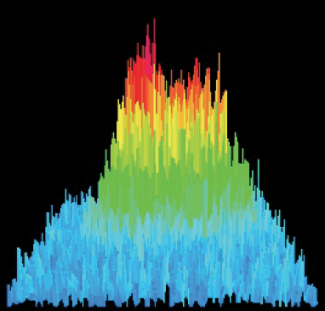Under ordinary circumstances, making new molecules can be simple and straightforward - just a matter of mixing together some highly reactive chemicals and letting nature take its course. However, when the reactants are a few millionths of a degree above absolute zero, the creation of new molecules requires the sophisticated tools of modern experimental physics. Using those tools, graduate student Scott Papp and Fellow Carl Wieman recently created the world's first ultracold diatomic molecules made from two different atoms.
The atomic constituents of the new molecules are different isotopes of rubidium, 85Rb and 87Rb. Both are bosons and contain the same number of protons in their nuclei, making them the same chemical element. However, 87Rb has two additional neutrons in its nucleus. The creation of 85Rb-87Rb molecules is a key first step toward the efficient production of a variety of heteronuclear ultracold molecules, many of which are expected to exhibit permanent dipole moments in their ground states. Such dipolar ultracold molecules are expected to play a role in quantum computing and the search for the electron electric dipole moment.
To create their ultracold molecules, the researchers cooled a mixture of the two atoms to below 10 μK, where the 87Rb formed a Bose-Einstein condensate and the 85Rb remained a gas. They then tuned a magnetic field from low to high through a Feshbach resonance, a particular magnetic field that precisely controls the collision speed of the atoms and allows their quantum states (wave functions) to overlap. They also tried applying a small oscillating magnetic field to the ultracold atom mixture.
Both processes created exotic, large molecules in their highest possible vibrational states. The new molecules were bound together by only a tiny amount of energy. In fact, they were about 10 orders of magnitude more weakly bound than if they were in their ground state! Not surprisingly, the 85Rb-87Rb molecules didn't last very long - only about a millisecond - before they fell apart spontaneously or got knocked apart in a collision.
Now the researchers want to develop methods to put the 85Rb-87Rb molecules into their lowest vibrational state. Once the molecules are in their ground state, they will last longer and be much more stable. The ability to create stable, long-lasting ultracold heteronuclear molecules will lead to many new and exciting research projects for years to come. - Julie Phillips




